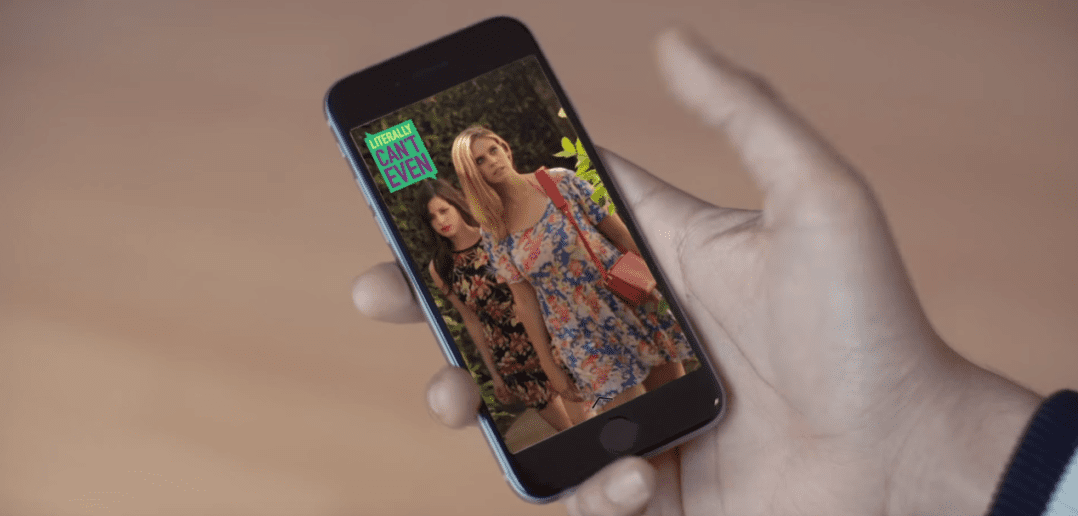Facebook, the biggest social network out there, delivers no less than 8 billion video views daily. Even your parents know how to use it – watch clips, poke and like, and if they don’t know something, they’ll be commenting on your friends’ posts in no time.
Now here is an unbelievable statistic: Snapchat is not so far behind, delivering no less than 7 billion daily video views. Unlike Facebook, and except for a few early adopters and those with ADHD, your parents aren’t close to signing up for, or understanding how to use, Snapchat.
Snapchat’s fans, us included, love it because it obeys no known rules. Actually, it checks almost every possible item on the proverbial “don’ts” list: its UI is a secret handshake; content must be seen within a specific window; it attracts the users’ undivided attention, free of multitasking; no stats are shared beyond the users themselves; there’s no way to share externally, deep-link or syndicate.
You’ve got to give props to the platform that’s turning almost all conventional wisdom on its head, sending “social media gurus” running to rewrite and rethink their unending flow of blog posts, books, podcasts and presentations on best practices, case studies, dos and don’ts (almost like how Donald Trump is throwing conventional political wisdom, and the pundits, for a spin).
And yet, for all its wild boundary-pushing, Snapchat is doing better than the channel on your TV screen right now. Seven billion views is a number every TV executive or content outlet would give anything to get. We’ve seen the briefs ourselves, from desperate TV executives, yearning for anything remotely Snapchat-esque. They’re open to game shows, variety or even scripted, as long as it’ll help them grab some of those 7 billion views.
The ultimate dick-pic platform has transformed into the primary form of communication for Gen Z, offering them at once more intimacy and more openness. You can be your “real” self, and not worry about the consequences, to more people, all in an easy-to-use package that’s extremely addictive. Above all, it is built to supply the most precious resource of all – undivided attention. No matter where you are reading this right now, we’re safe in assuming there are other screens or tabs open nearby… but not on Snapchat.
Regardless of your definition of TV (broadcast, cable, Netflix and even YouTube) – networks continue to boast about viewership numbers while struggling to keep audiences engaged. Importantly, they’re just as happy to accept completely passive viewers as long as the content is left playing (hello auto-play!)
Snapchat, by its very DNA, has no audience other than an engaged audience. The UI simply doesn’t allow you to avert your attention.
Some forward-thinking brands like Fusion, Comedy Central, Buzzfeed, CNN and HBO have already joined the party, notably via Snapchat’s rich content Discover section. CNN is even rumoured to have more views on Snapchat than on traditional TV; a figure impossible to check, as the platform is loath to give out stats. But Snapchat CEO Evan Spiegel did go on the record at a conference last November as saying “more people are watching college football on Snapchat than they are on television.”
Meanwhile, Viacom just announced a renewed deal with the platform, which makes it Snapchat’s first advertising partner in the entertainment sphere, and which could bring premium content like the MTV Video Music Awards to Snapchat.
Creators and brands excelling at the new language of Snapchat include Vine goddess Brittany Furlan (follow BrittanyJFurlan), socialite Julz Goddard (follow YesJulz), traditional stars like Paris Hilton (follow RealParisHilton), Nicole Richie (follow ItsNikkiFresh) and yes, even the President recently joined (follow WhiteHouse).
Viewer attention may last no longer than a few seconds, but it is nonetheless much more than what other mediums achieve.
Unless you’re selling ads and need to flaunt watch-times (hello again, auto-play!), you’d much prefer a few seconds of undivided attention to hours of (usually muted) white noise.
Let’s put it this way: while you were reading this, another TV viewer cut the cord and snapped in for an entertainment experience we’re only starting to understand. It’s a whole new language for content and user engagement that traditional media knows it can’t ignore. Snapchat empowers altogether new, smart and interesting ways to tell stories and our friends in the TV world will either adapt, adopt or… you know where this is going.
This post was co-authored with Jacob Shwirtz, former chief social media officer of Endemol Beyond, former Social TV lead at Viacom and, currently, personal chief digital officer to talented creators. You should definitely follow him on Twitter.
Image: Literally Can’t Even, one of the first TV series developed for Snapchat (via Snapchat)




